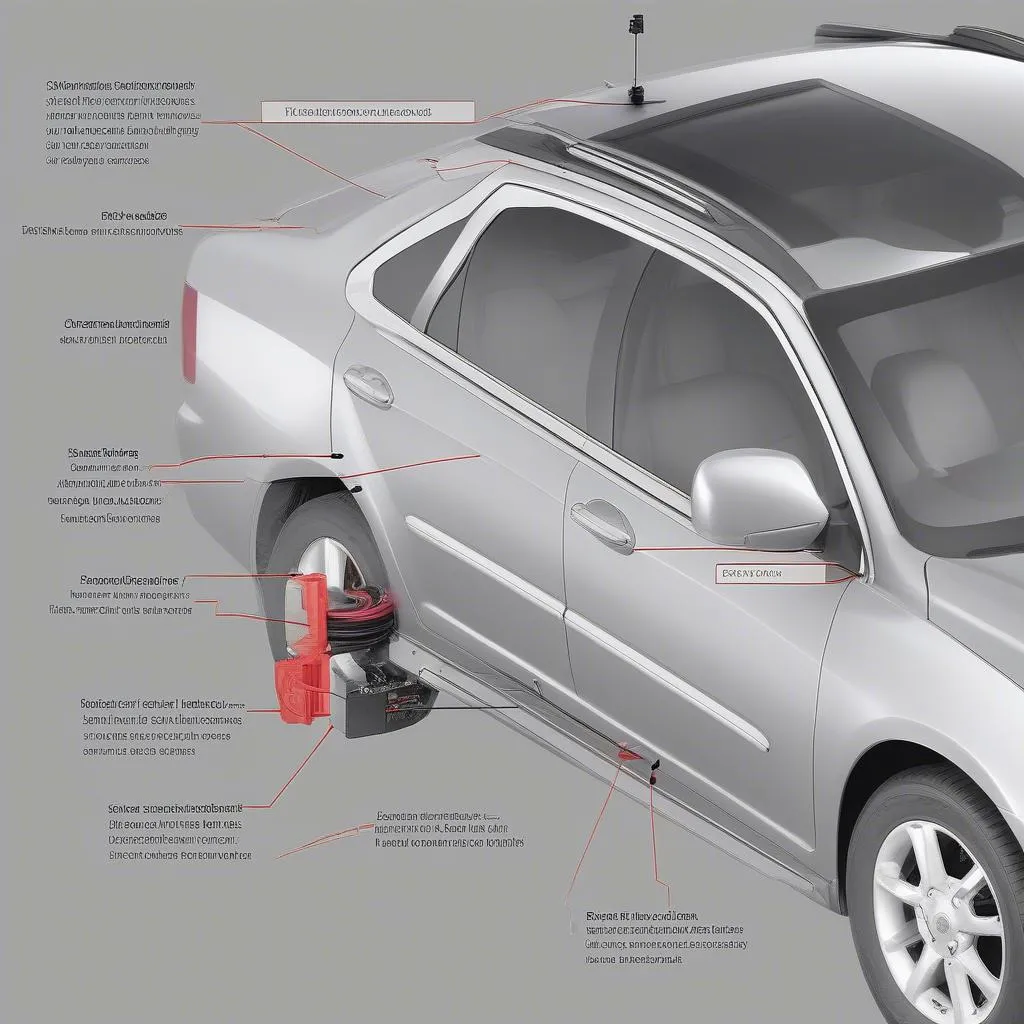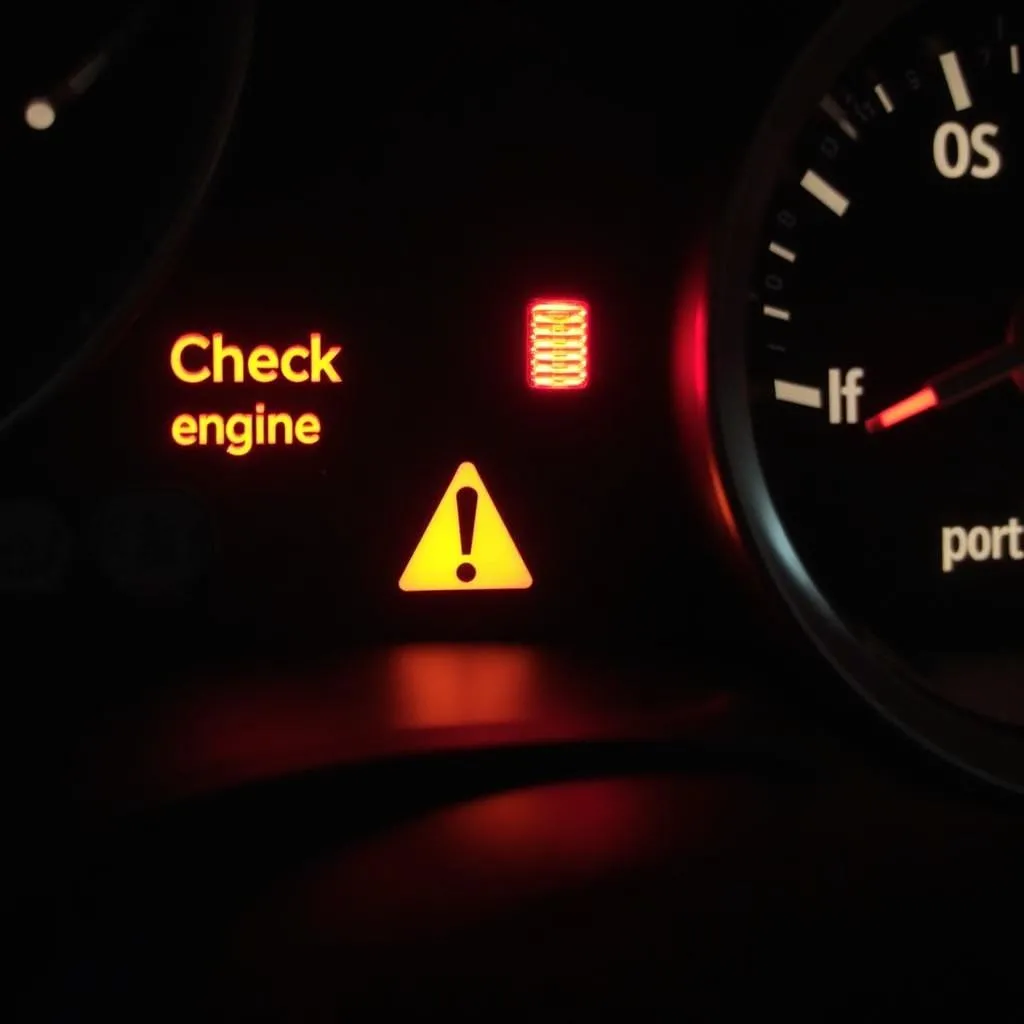The dreaded mazda brake warning can induce panic in any driver. Whether it’s a persistent light, an intermittent chime, or a message on your dashboard, understanding the various mazda brake warnings is crucial for maintaining your vehicle’s safety and performance. This comprehensive guide explores the common causes, troubleshooting steps, and solutions for addressing Mazda brake warnings, empowering you to take control of the situation and ensure a safe driving experience.
This guide will help you understand why you’re seeing a mazda brake warning screen and what you can do about it.
Common Mazda Brake Warning Lights and Their Meanings
Mazda vehicles utilize a sophisticated system of warning lights to communicate potential issues with the braking system. Recognizing these lights is the first step towards diagnosis.
Brake Warning Light
The standard brake warning light, typically red, can indicate several problems. Low brake fluid is a common culprit. This light can also illuminate if the parking brake is engaged. However, if the light persists after releasing the parking brake, it signifies a more serious issue, such as a leak in the brake lines or a problem with the master cylinder.
ABS Warning Light
The Anti-lock Braking System (ABS) warning light indicates a potential malfunction within this crucial safety system. While your brakes may still function, the ABS might not engage during emergency braking situations, potentially leading to loss of control. Causes can range from a faulty ABS sensor to issues with the ABS module.
Electronic Parking Brake Warning Light
Modern Mazdas often feature electronic parking brakes. A warning light associated with this system can indicate a malfunction, such as a faulty switch, a wiring problem, or an issue with the actuator.
Experiencing a mazda brake warning light can be unsettling, but understanding its meaning is the first step toward a solution.
Troubleshooting Mazda Brake Warnings
Before rushing to a mechanic, there are some preliminary steps you can take to diagnose the issue.
Check Brake Fluid Level
Inspect the brake fluid reservoir. Low brake fluid is a common cause of the brake warning light. If the level is low, carefully top it off with the correct type of brake fluid specified in your owner’s manual. However, persistently low brake fluid indicates a leak, requiring professional inspection.
Inspect Brake Pads and Rotors
Worn brake pads can also trigger warnings. Visually inspect the brake pads through the wheel spokes. If they appear thin or worn, replacement is likely necessary.
Scan for Diagnostic Trouble Codes (DTCs)
Using an OBD-II scanner, you can retrieve diagnostic trouble codes related to the braking system. These codes provide valuable insights into the specific problem, helping you pinpoint the source of the malfunction.
A smart brake support warning light mazda could indicate a problem with this advanced safety feature.
When to Seek Professional Help
While some brake issues can be addressed with simple DIY solutions, others require the expertise of a qualified technician. If you encounter any of the following scenarios, seek professional assistance immediately:
- Persistent brake warning lights despite troubleshooting
- Soft or spongy brake pedal
- Grinding or squealing noises when braking
- Pulling to one side while braking
- Vibrations in the brake pedal or steering wheel
Remote Diagnostics and Software Solutions
Modern vehicles, including Mazdas, rely heavily on software and electronic systems. In many cases, brake warnings can stem from software glitches or outdated modules. Remote diagnostics and software updates, offered by specialized services, can often resolve these issues without requiring a physical visit to a workshop. This innovative approach saves time and money while ensuring your vehicle’s systems are operating optimally.
Conclusion
Addressing mazda brake warnings promptly is crucial for maintaining safety and preventing further damage. By understanding the different warning lights, performing basic troubleshooting, and seeking professional help when necessary, you can ensure your Mazda’s braking system remains in optimal condition, providing peace of mind on the road. If you own a Mazda CX-9, understanding the mazda cx 9 brake warning light is particularly important.
“Ignoring brake warnings can lead to costly repairs down the line. Addressing them promptly is always the best course of action.” – John Smith, Automotive Diagnostic Specialist
“Remote diagnostics and software updates are revolutionizing the way we service modern vehicles, providing efficient and cost-effective solutions for many brake-related issues.” – Jane Doe, Senior Automotive Software Engineer
“Regular brake system maintenance is essential for preventing problems and ensuring optimal performance. Don’t wait for a warning light to appear – be proactive in caring for your brakes.” – David Lee, Certified Mazda Technician
For issues with the electronic parking brake, consult the resources on mazda cx 5 electronic parking brake warning light.
FAQ
-
What does a flashing mazda brake warning light mean? A flashing brake warning light usually indicates a critical issue with the ABS system.
-
Can I drive with the ABS light on? While you can still drive, the ABS may not function properly. Seek professional inspection as soon as possible.
-
How often should I check my brake fluid? It’s recommended to check your brake fluid level at least once a month.
-
How much does it cost to replace brake pads? The cost varies depending on the model and type of brake pads.
-
What are the symptoms of a bad brake master cylinder? Symptoms include a soft or spongy brake pedal, low brake fluid, and difficulty stopping.
-
How often should brake rotors be replaced? Brake rotor lifespan varies, but they typically last between 30,000 and 70,000 miles.
-
Can low tire pressure cause a mazda brake warning light? While low tire pressure doesn’t directly trigger a brake warning light, it can affect braking performance and indirectly contribute to other issues that might trigger a warning.


